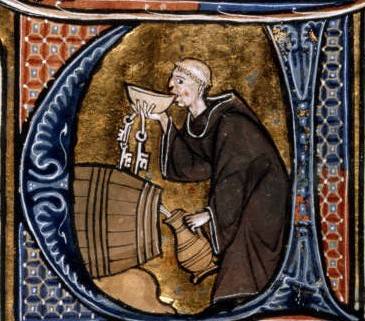Sour Power: Wild Brewing of Sour Beer
Craft Brew Business recently released a list of the Top 5 craft beer styles of 2014. And to no ones surprise, IPAs are number one. And though IPAs still reign supreme in the world of the craft drinker, there are a lot of other styles fighting for a space on tap lists across the country. One of the more intriguing categories of beer making some head-room (apologies for the foamy-pun) in beer halls is sour beer.
A Background On Sour Beers
Sour beer isn’t a style but a category with a range of styles and sub-styles. Traditionally, sour beers come from Belgium. A great article in the New Yorker highlights Cantillon brewery in Brussels as a forefather of sour beers, with the brewery producing commercially available sours starting in 1900. Cantillon is now a legendary brewery for beer enthusiasts, or beer geeks as I’m told is their nom de guerre. I recently operated a bar that throws an annual sour beer fest, and our collection of Cantillon brews would always sell out first.
The craft beer obsession in America has a created a new life for sour beers. In recent years, American brewers have started creating their own sour batch brews. With American drinkers being into big and bolt beers, it makes sense that the extreme flavors of sour beer would find a place in the American palate. But it can be a risky procedure for brewers. These beers must be brewed in separate facilities from non-sour beers to avoid contamination. The addition of American beers to the category are often tagged as American Wild Ales.
A reason, other than taste preference, that sour beers are taking off in the USA might be because you can frame these beers as the pinnacle of craft brewing. They are the antithesis to the macro-brewery process of sterilized production oversight. This is because the essence of sour beer is in the open-fermentation process in which beers are aged in open wooden containers and interaction with bacteria is promoted. This exposure to bacteria like Lactobacillus and Pediococcus and the use of Brettanomyces yeast is what gives these beers their compelling flavors. And though these terms sound clinical, they are now buzzwords for sour beers in the same way that hop-varietals like citra and simcoe are trail markers for IPA and Pale Ale drinkers.
Styles and What to Look For in Sour Beer
The flavors found in the category can range from tart and fruity, to funky and musty and all the way down to oh-my-god-that’s-terrible. Yes, sour beers are polarizing, but that just means that for the number of those who despise them, there’s an equal number of those who love them.
Lambic – A spontaneously fermented beer subject to wild bacteria and yeast. They tend be dry, and taste like a sour cider. Generally, a lambic will be re-fermented in the bottle by adding sugars to the beer once it’s been bottled. Lambic is also the base beer for all the following styles of beer. It’s hard to find a pure or young lambic outside of Belgium.
Gueuze – A style of beer created by blending young lambics (aged less than a year) and old lambics (aged over one year). They have similar flavor profiles to lambics but are more prevalent than true, unblended lambics.
Gueuze to try: Girardin Gueuze 1882, Cantillon Gueuze 100% Lambic
Faro – Beer with a lambic base that is added to a fresh made, light beer, that then has molasses or caramel added as a sweetener.
Faro to try: Lindemans Faro
Fruit Lambic – One of the more popular styles of sour beers. These lambics used fruit syrup or actual fruit added to them. The most popular are kriek lambic (cherry) framboise lambic (raspberry) and pomme lambic (fruit)
Fruit Lambics to try: Timmermans Kriek, Cantillon Fou’ Foune, Lindemans Framboise
Flander’s Red – A heavier style sour beer that draws a lot of it’s character from the red malt used during brewing. These can have intense sour notes, but are often more balanced and moderate beers than a lambic or gueuze.
Flander’s Reds to try: Duchese de Bourgogne, Rodenbach Classic, Cuvee Des Jacobins
American Wild Ales – A general term for American beers produce using wild bacteria and yeast.
Wild Ales to try: Jolly Pumpkin La Roja, The Bruery Sour In The Rye, New Belgium La Folie
- 5 Fall Cocktails to Capture the Flavors of Autumn - September 26, 2018
- How Restaurants Can Ignore Sales and Increase Profits - May 9, 2018
- 2018 Spring Wine Trends - April 18, 2018



